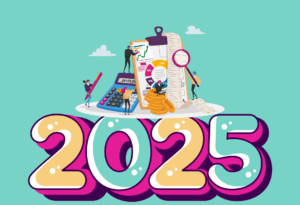Organizations face unprecedented challenges and opportunities in the ever-evolving landscape of nonprofit fundraising. The post-pandemic era has accelerated the shift toward digital fundraising, but traditional methods remain essential for building strong donor relationships and securing significant gifts. As nonprofits navigate this complex environment, it’s crucial to strike a balance between digital and traditional fundraising strategies to ensure long-term sustainability.
The nonprofit sector has always been adaptable, but recent years have demanded more innovation and resilience than ever. The COVID-19 pandemic forced many organizations to pivot quickly to digital platforms, leveraging social media, online events, and crowdfunding to stay afloat. While these digital strategies have proven effective, they should not replace traditional methods entirely. Instead, nonprofits must integrate both approaches to create a robust, sustainable fundraising strategy that appeals to diverse donor segments and maximizes impact.
The Current State of Nonprofit Fundraising
The pandemic has significantly altered the fundraising landscape. With in-person events severely limited, nonprofits turned to virtual galas, online auctions, and social media campaigns to engage donors. This shift has been particularly beneficial for reaching younger donors who are more comfortable with digital platforms. However, older donors often provide larger gifts and may still prefer traditional methods like direct mail and personal solicitations.
Impact of Global Events
Global events, including economic fluctuations and social movements, have also influenced donor behavior. Some donors are more inclined to support causes related to current events, while others may reduce their giving due to economic uncertainty. Nonprofits must be agile in responding to these changes, ensuring their messaging resonates with donors’ current concerns and values.
Changing Donor Demographics and Preferences
Donor demographics are evolving, with younger generations becoming more prominent in the philanthropic landscape. Millennials and Gen Z donors are digitally savvy and often prefer to engage with causes through social media and online platforms. However, they also value authenticity and transparency, expecting nonprofits to demonstrate clear impact and accountability.
The Rise of Digital Fundraising Platforms and Tools
The proliferation of digital fundraising tools has made it easier for nonprofits to reach a wider audience. Platforms like GoFundMe, Kickstarter, and Facebook Fundraisers have democratized fundraising, allowing individuals and small organizations to launch campaigns with minimal overhead. However, these platforms often come with fees, and nonprofits must carefully consider their cost-effectiveness.
Digital Fundraising Strategies
Digital fundraising offers numerous benefits, including lower costs, broader reach, and real-time engagement. Here are some effective digital strategies:
Social Media Campaigns and Viral Challenges
Social media platforms like Facebook, Instagram, and Twitter are ideal for launching viral challenges and campaigns. These can quickly spread awareness and encourage donations, especially when tied to trending hashtags or events. For example, the ALS Ice Bucket Challenge raised over $100 million for ALS research by leveraging social media to create a fun, participatory experience.
Crowdfunding Platforms
Crowdfunding platforms allow nonprofits to create targeted campaigns for specific projects or needs. These platforms are particularly effective for smaller organizations or those with a strong online presence. By setting clear goals and deadlines, nonprofits can create a sense of urgency that motivates donors to contribute.
Email Marketing and Automation
Email remains a powerful tool for fundraising, especially when combined with automation. Nonprofits can use email marketing software to personalize messages, segment donors, and automate follow-ups. This helps maintain consistent communication and builds relationships over time.
Mobile Giving and Text-to-Donate Options
Mobile giving, including text-to-donate options, provides donors with a quick and easy way to contribute. This method is particularly effective during live events or when paired with social media campaigns. However, nonprofits must ensure their mobile giving systems are secure and user-friendly.
Virtual Events and Online Auctions
Virtual events have become a staple of nonprofit fundraising, allowing donors to engage remotely. Online auctions can be especially successful, allowing nonprofits to offer unique experiences or items while minimizing logistical costs.
Cryptocurrency Donations and Blockchain Technology
The rise of cryptocurrency has introduced new opportunities for nonprofits. Some organizations are now accepting Bitcoin and other cryptocurrencies, which can attract tech-savvy donors. Blockchain technology also offers the potential for increased transparency and security in fundraising transactions.
Traditional Fundraising Approaches
While digital strategies are essential, traditional methods remain vital for building strong relationships and securing significant gifts. Here are some effective traditional approaches:
Direct Mail Campaigns
Direct mail continues to be an effective way to reach older donors who may not be as active online. Personalized letters and targeted mailings can help nonprofits maintain a connection with these valuable supporters.
Face-to-Face Solicitation and Relationship Building
Personal relationships are crucial in fundraising. Face-to-face meetings allow nonprofits to build trust and understanding with major donors, often necessary for securing large gifts.
Physical Events and Galas
In-person events provide nonprofits with opportunities to engage donors in a more immersive way. Galas, charity runs, and auctions can raise significant funds while fostering community among supporters.
Corporate Partnerships and Sponsorships
Building relationships with corporations can lead to substantial funding through sponsorships and partnerships. These collaborations often involve mutual benefits, such as brand enhancement for the corporation and financial support for the nonprofit.
Grant Writing and Foundation Outreach
Grants from foundations and government agencies can provide significant funding for specific projects. Effective grant writing requires a deep understanding of the funder’s priorities and clearly articulates the nonprofit’s goals and impact.
Planned Giving and Legacy Donations
Planned giving involves encouraging donors to include nonprofits in their estate plans. This can lead to substantial legacy donations, critical for long-term sustainability.
Integrating Digital and Traditional Methods
To achieve sustainable fundraising, nonprofits must integrate digital and traditional strategies seamlessly. Here are some ways to create a cohesive approach:
Creating a Cohesive Multichannel Strategy
A multichannel strategy involves using digital and traditional methods to reach donors across different platforms. For example, promoting a physical event through social media and email can increase attendance and engagement.
Personalizing Donor Experiences Across Platforms
Personalization is key to building strong donor relationships. Nonprofits should use data to tailor messages and experiences, whether through personalized emails or customized direct mail appeals.
Using Data Analytics to Inform Both Digital and Traditional Efforts
Data analytics can help nonprofits understand donor behavior and preferences, informing digital and traditional strategies. By analyzing engagement metrics and donation patterns, nonprofits can optimize their approaches for better results.
Storytelling Techniques That Work Across Mediums
Compelling storytelling is essential for fundraising, regardless of the medium. Nonprofits should develop narratives that resonate with donors’ values and emotions and share these stories using both digital and traditional channels.
Leveraging Traditional Events to Boost Digital Engagement
Traditional events can be used to enhance digital engagement. For instance, encouraging attendees to share their experiences on social media during an event can amplify its reach and create a buzz around the nonprofit’s mission.
Case Studies
Several nonprofits have successfully integrated digital and traditional fundraising strategies. Here are a few examples:
- American Red Cross: The American Red Cross effectively uses social media to promote blood drives and disaster relief efforts while maintaining strong relationships with major donors through traditional methods.
- St. Jude Children’s Research Hospital: St. Jude has leveraged digital platforms for fundraising campaigns like the “Thanks and Giving” campaign while hosting successful in-person events and galas.
- The Nature Conservancy: The Nature Conservancy uses digital tools to engage supporters in conservation efforts while relying on traditional methods like direct mail and corporate partnerships to secure significant funding.
Overcoming Challenges in Balanced Fundraising
Integrating digital and traditional fundraising strategies comes with several challenges:
Addressing Generational Gaps in Giving Preferences
Nonprofits must cater to different generational preferences. Younger donors may prefer digital engagement, while older donors might respond better to traditional methods. Tailoring strategies to these preferences can help ensure broad appeal.
Managing Resource Allocation Between Digital and Traditional Methods
Resource allocation is critical. Nonprofits should assess the cost-effectiveness of each strategy and allocate resources accordingly. Digital methods often require less upfront cost, but traditional methods can yield higher returns per donor.
Training Staff and Volunteers in Both Approaches
Staff and volunteers need training in both digital and traditional fundraising techniques. This ensures that everyone is equipped to engage donors effectively across different platforms.
Ensuring Data Privacy and Security Across All Channels
Data privacy and security are paramount. Nonprofits must protect donor data, whether collected through digital platforms or traditional methods. This involves implementing robust security measures and complying with relevant regulations.
Measuring Success and ROI
Evaluating the success of fundraising strategies requires careful measurement of key performance indicators (KPIs):
Key Performance Indicators for Digital Fundraising
- Engagement metrics: Likes, shares, comments on social media.
- Conversion rates: Percentage of website visitors who donate.
- Email open and click-through rates: Indicators of email campaign effectiveness.
Metrics for Evaluating Traditional Fundraising Efforts
- Attendance at events: Measures engagement and community building.
- Response rates to direct mail: Indicates the effectiveness of targeted mailings.
- Donor retention rates: Reflects the strength of donor relationships.
Tools for Tracking Cross-Channel Donor Journeys
Tools like CRM software can help nonprofits track donor interactions across different channels, providing a holistic view of engagement and giving patterns.
Calculating the True Cost of Acquisition and Retention
Calculating the cost of acquiring new donors versus retaining existing ones helps nonprofits optimize their strategies. Generally, retaining donors is more cost-effective than acquiring new ones.
Predictions for Donor Behavior and Preferences
Donors will increasingly expect transparency, accountability, and personalized engagement from nonprofits. Nonprofits must adapt their strategies to meet these evolving expectations.
The Evolving Role of AI and Machine Learning in Fundraising
AI and machine learning will play a more significant role in fundraising, helping nonprofits analyze donor data, predict giving patterns, and automate routine tasks.
Conclusion
Achieving sustainable fundraising requires a balanced approach that integrates digital and traditional strategies. By understanding donor preferences, leveraging emerging technologies, and measuring success across channels, nonprofits can build robust fundraising systems that ensure long-term impact.
Key Takeaways
- Diversify your fundraising mix: Combine digital and traditional methods to reach a broad audience.
- Personalize donor experiences: Use data to tailor messages and engagement across platforms.
- Stay adaptable: Be prepared to adjust strategies as donor preferences and technologies evolve.
Nonprofits should reassess their fundraising strategies to ensure they effectively leverage both digital and traditional approaches. By doing so, they can create a sustainable foundation for growth and continue to make meaningful impacts in their communities.
Additional Resources
For nonprofits looking to enhance their fundraising strategies, here are some recommended tools and resources:
- CRM Software: Tools like Salesforce or Raiser’s Edge can help manage donor relationships and track engagement.
- Digital Fundraising Platforms: Platforms like Classy or Network for Good offer comprehensive digital fundraising solutions.
- Consulting Services: Organizations like Temple Management Consulting provide expert guidance on developing sustainable fundraising strategies.
By embracing a balanced approach to fundraising and staying informed about the latest trends and technologies, nonprofits can confidently navigate the complex fundraising landscape and achieve their mission-driven goals.



